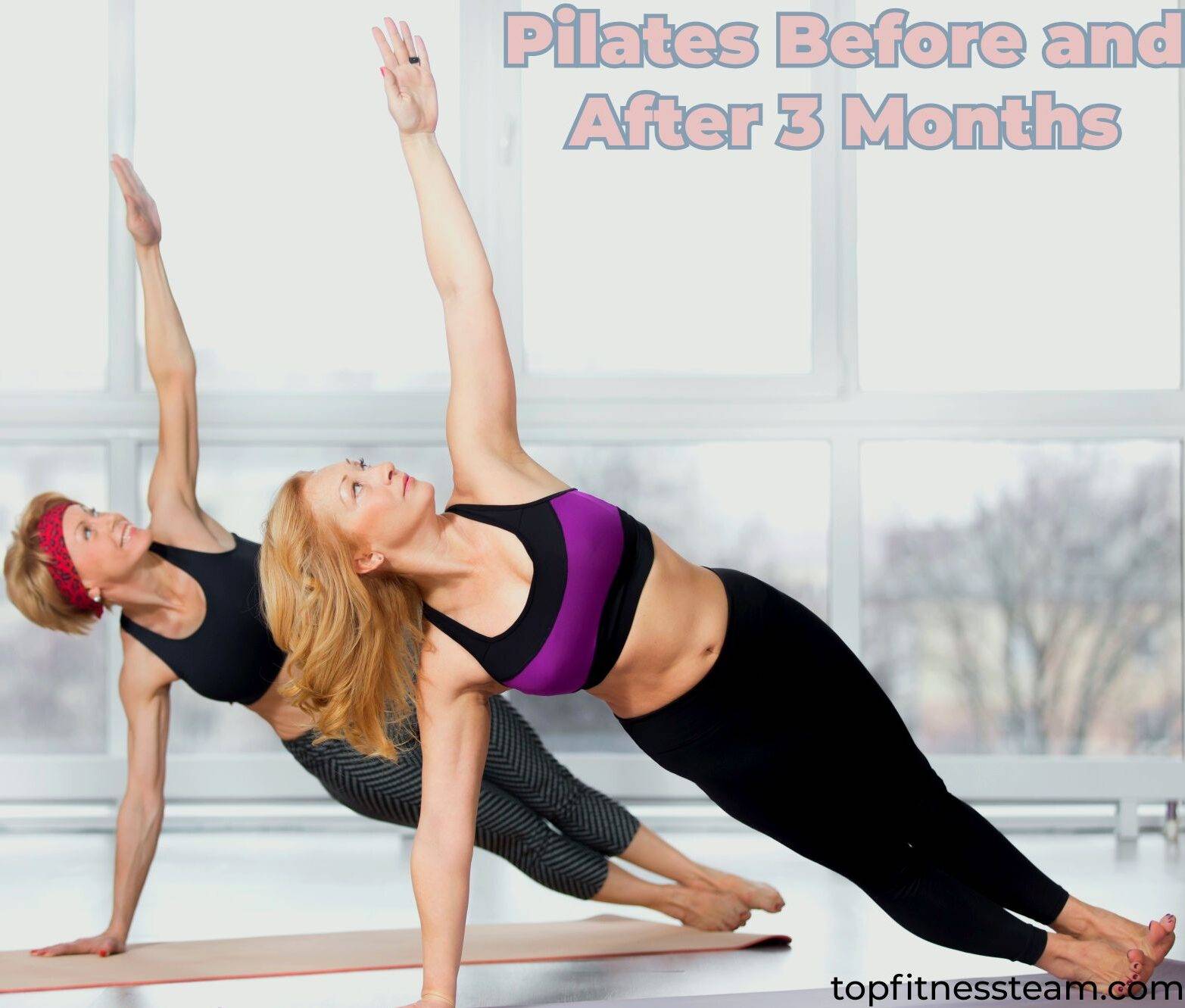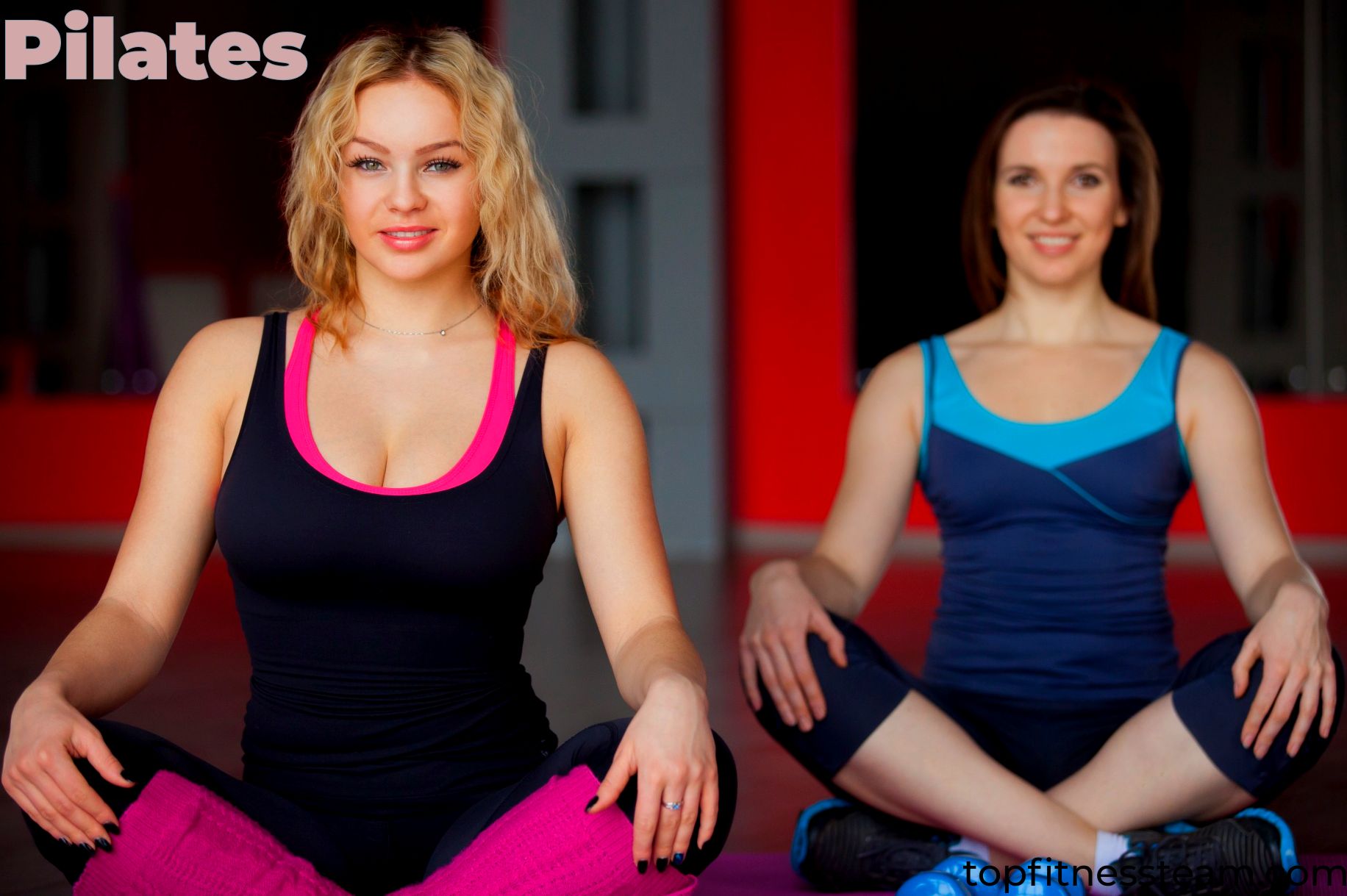Hello everyone, Top Fitness Team is here. This article will tell you about Pilates Before and After 3 Months.
Introduction Pilates Before and After 3 Months
Pilates, a physical fitness system designed by Joseph Pilates, has become famous for many.
From those looking to improve flexibility to those eyeing weight loss, pilates sessions cater to diverse fitness goals.
This article delves into the transformative Journey of practicing Pilates for three months, measuring the before and after effects.
Understanding Pilates
Joseph Pilates conceived this unique workout method highlighting core strength, balance, and flexibility.
It’s not just about losing weight. It is a holistic path to well-being.
Regular practice, even 30 minutes a few days a week, can yield excellent mental and physical results.
Benefits of Regular Pilates Practice
The charm of Pilates workouts extends beyond toning muscles.
With regular practice, you witness improved posture, a sharp reduction in back issues, and even mental benefits like improved attention.
Setting Expectations
Before essaying on the Pilates journey, gauging your fitness level is crucial.
Starting with guidance from a local pilates class can help you set tangible goals and measure progress correctly.
Documenting the 3-Month Journey
The body gradually aligns with Pilates’s core principles in the initial weeks.
By the middle phase, the 30 minutes spent on exercises become more intense.
And by the last month, not only does one’s physique show apparent changes, but there’s also a newfound stamina that’s hard to miss.
Difference Between 1 Month and 3 Months in the Context of a Fitness or Skill Routine
The passage can be natural when you essay on a new journey, whether learning a skill or sticking to a fitness exercise.
Let us determine the results and experiences one might encounter after one month versus three months.
1. Progress and Development
- 1 Month: Initial stages usually involve adjusting to the routine or basics of a skill. One can witness introductory passages, get familiar with the techniques, and see slight changes in physical or mental abilities.
- 3 Months: By the third month, there is a deepening of understanding. Regarding fitness, muscles are better toned, perseverance increases, and the body adapts. If it is a skill, one might have moved past the novice stage, reaching a certain level of competence.
2. Challenges Faced
- 1 Month: Early challenges are more about acquainting oneself. I might include initial soreness in a fitness regime or simple mistakes and misunderstandings when learning a skill.
- 3 Months: Challenges become more advanced. The body or mind seeks more intensity, requiring one to push boundaries and overcome plateaus.
3. Consistency and Habit Formation
- 1 Month: It is often said that forming a habit takes around 21 days. By the end of the first month, the routine or practice starts becoming a regular part of one’s day.
- 3 Months: At this point, the routine is well-embedded. It is more than a habit. It is a lifestyle choice. There’s a more profound commitment and a clearer understanding of why one is pursuing this journey.
4. Visible Results
- 1 Month: Changes are usually subtle. There might be slight weight loss, improved flexibility, or better stamina in a fitness context. The basics are more transparent in skill investment, and confidence starts building.
- 3 Months: Results are more evident. One might witness apparent weight loss, muscle definition, or significantly improved stamina. Skill-wise, one could perform tasks with greater efficiency and certainty.
5. Feedback and Adjustments
- 1 Month: Feedback circles around fixing basic errors and ensuring one is on the right track.
- 3 Months: Feedback becomes more refined, focusing on nuances and finer details. Adjustments involve honing techniques and pushing toward mastery.
The journey from 1 month to 3 months deepens understanding, advance, and advance.
While the initial month sets the foundation, the following months build upon it, aiming for excellence and mastery.
Personal Testimonials
Nothing beats real-life accounts of those who took the 3-month challenge.
Their stories offer a range of experiences, from the initial struggles on the reformer machine to the final achievements of getting reformer Pilates.
Tips for The Challenge
Character in following pilates classes and including high-intensity workouts can accelerate results.
Moreover, relating Pilates to a balanced diet can make a difference.
Common Misconceptions
While many initiate Pilates to lose weight, it’s much more.
The practice, whether on a mat or a reformer machine, is also about building strength, improving flexibility, and channeling mental peace.
Read Relative
- What about the transformations after a shorter stint? Here’s an insight into What Results you can expect After Your First 30 Days of Pilates. (Before and after Explained).
- Also, for those curious about the effects of another trending therapy, check out Red Light Therapy Before And After 2023.
Pros and Cons of [Pilates Before and After 3 Months]
Pros
- Enhanced flexibility & posture
- Mental peace and increased concentration
- Suitable for all age groups
- This can be done without any equipment
Cons
- Initial muscle soreness
- It may not suit those looking for high-intensity workouts
- Requires commitment for best results
- Optimal benefits are often seen with a reformer machine
My Final Thoughts
Tackling on a Pilates journey is not just about the hours you spend practicing. It is a lifestyle choice.
In three months, not only will your body thank you, but the peace and balance you experience mentally is the real win.
So, if you are balancing on the border, wondering whether to take the plunge, remember, every time you roll out that mat or get on the reformer machine, you are a step closer to a better you. Happy practicing!
FAQs
Q: How long will it take for Pilates to show results?
Ans: Pilates results vary per individual, but many people notice initial changes in flexibility, posture, and muscle tone within a few weeks, with more significant changes happening after several months of constant exercise.
Q: How has Pilates changed my body?
Ans: Pilates can improve core strength, improve flexibility, better posture, and tone muscles, leading to a more aligned and sculpted physique.
Q: Does Pilates help with belly fat?
Ans: While Pilates supports and tones the core muscles, reducing belly fat requires a balanced diet, cardiovascular exercise, and overall caloric burn. Yet, Pilates can be a beneficial component of a broad fitness regimen.
Q: How many calories does Pilates burn?
Ans: The number of calories burned during a Pilates session varies based on the intensity of the workout and the person’s weight. Still, on average, a person can burn between 100 to 450 calories per hour.
Q: Can Pilates slim my body?
Ans: Even Pilates practice can tone and sculpt muscles, leading to a leaner build. Yet, combining Pilates with other forms of exercise and a balanced diet is essential for powerful slimming.
Thanks.


1 thought on “Pilates Before and After 3 Months A Complete Guide 2023”